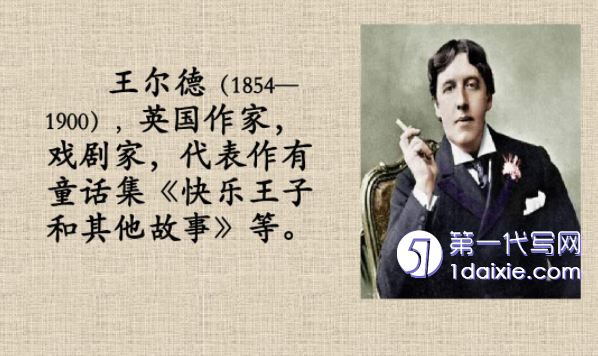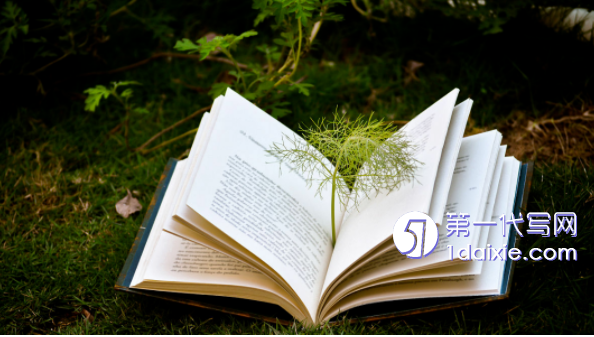本文是一篇英语论文,本研究主要采用叙事学的研究方法,借助反讽理论,将王尔德短篇小说作为一个艺术整体,通过文本细读来考察其在艺术创作过程中具体的叙事策略及其效果,探索其背后的叙事诉求。
CHAPTER ONE INTRODUCTION
1.1 Oscar Wilde and His Short Stories

Oscar Wilde(1854-1900),born in Dublin,Ireland,is one of the greatest writers andartists of 19th-century England(Ireland,to be precise,but then ruled by England),knownfor his plays,poems,fairy tales and novels,an icon of aestheticism,a mainstay of theaesthetic movement of the 1880s and a pioneer of the Decadent movement of the 1990s.Including fairy tales,Wilde authored fourteen short stories in his life.In May 1888,heissued a collection of stories entitled The Happy Prince and Other Tales,consisting of“The Happy Prince”,“The Nightingale and the Rose”,“The Selfish Giant”,“TheRemarkable Rocket”and“The Devoted Friend”,the critical reaction to which is prettyfavorable.Walter Pater praised highly for his stories in a letter.In 1889,“The Portrait ofMr.W.H.”was published.It is a classic example of a liberal theory and a homosexualpolemic.With the dawn of the Eighteen Nineties,Oscar Wilde came into his own.InNovember 1891,The House of Pomegranates,Wilde’s second collection of fairy tales wasreleased,which alone is sufficient to establish his reputation as an artist,comprising“TheFisherman and his Soul”,“The Star-Child”,“The Young King”,and“The Birthday of theInfanta”.Although both collections are fairy tales,The House of Pomegranates is waymore sophisticated than The Happy Prince and Other Stories,targeting primarily atupper-class parents.His collection Lord Arthur Savile’s Crime and Other Stories appearedin July 1891,aiming at adult audiences and varying considerably in theme and style.Thiscollection was received with some disappointment.William Sharp observed that thestories“will not add to their author’s reputation”(Beckson 119),while the Graphic foundthe volume“excellent”,but reserved its highest praise for the title story,which was“worthall Mr.Wilde’s serious work put together”(Beckson 9).
1.2 Literature Review of Wilde’s Short Stories
The study of aestheticism and Wilde began almost as soon as the subject of studycame to exist.In the last hundred years,research on Wilde has never ceased.According toincomplete statistics,nearly 1,500 books,essays and various related publications on Wilde,in addition to his own works,were published during the first 50 years of the 20th century.Although their number cannot be compared to that of the latter 50 years,it is more thanenough to be daunting.Domestic Wilde studies are dominated by essays,with fewermonographs.The earliest domestic studies of Wilde’s short stories began in 1922,whenZuo-Ren Zhou and Jing-Shen Zhao published“Wilde’s Fairy Tales”and“Wilde the FairyTale Writer”respectively in the Morning Post Supplement,commenting on Wilde and hisfairy tales.Most of the journal articles examining Wilde’s short stories are single-workstudies,focusing on the works in Wilde’s two collections of fairy tales.Translations beganin the 1820s,and to date,all aspects of Wilde’s work have been translated.The earliestforeign monograph on Wilde is Walter Hamilton’s book entitled The Aesthetic Movementin England(1889).This book,as a contemporaneous witness to this movement,has tracedthe intellectual origins of Aestheticism.Given that this thesis adopts a research frameworkthat combines form and theme,accordingly,it will review the major domestic and foreignresearch findings on Wilde’s short stories in terms of both formal and thematic studies,inan attempt to outline the context and significance of this study.
CHAPTER TWO IRONY IN COVERT PROGRESSIONS
2.1 Irony Against the Blindness of the Protagonist
The characterization in this type of covert progression is juxtaposed and contrastswith that in the plot development,which refers to the fact that in some works,the plotdevelopment portrays one kind of character image,while the covert progression outlinesanother.They conflict with each other,inviting widely divergent responses from the reader,and complement each other,transforming the characters’image from one-dimensional torich and complex(Shen 41).Among Wilde’s short stories,“The Nightingale and the Rose”and“The Devoted Friend”both praise and pity the protagonist in the plot development, but satirize and dismiss him or her in the covert progression,creating variant charactertraits in the explicit and implicit dynamics,rendering the fiction extremely tense.
In“The Nightingale and the Rose”,the covert progression concentrates on the ironydirected at the Nightingale’s blindness and egotism behind her sacred sacrifice.This tale isWilde’s most elaborate work(Shewan 43).This is its plot development:the Student weepsas the girl he loves will not dance with him at the ball unless he brings her a red rose,butthere is no red rose in his garden.The Nightingale pities him and sacrifices her own lifefor getting him a red rose to fulfill his love affair,yet the girl refuses the Student’s roseand chooses the jewel from the Minister’s nephew.In the end,the rose that carries the lifeof the Nightingale is discarded on the street by the Student.Critics generally consider thetheme of this fairy tale to demonstrate the traditional paradigm of dichotomy,reckoningthe self-sacrificing Nightingale as a divine Christ-like artist(Willoughby 107),celebratingthe beauty she represents,and criticizing the materialism and utilitarianism of theVictorian society that the Student embodies,taking the hypocritical and selfish Student asan object of irony(Widyalankara 3).This is true as far as its plot development isconcerned.However,there is another narrative dynamic behind the development of theplot,namely a covert progression that revolves around the irony against the Nightingale’sblindness and self-centeredness.In this section,we will investigate the covert progressionthroughout the work in order.
2.2 Irony Against Adults Controlling and Alienating Children
In children’s literature,there are different ideological tracks aimed at children andadult readers,often in contradictory narrative tension between the two.In one of Wilde’sletters(1889),he states that his fair tales are“not for children,but for childlike peoplefrom eighteen to eighty”(The Complete Letters of Oscar 388)!In other words,his fairytales are written for dual addressee,i.e.for both children and adults.In this section,theironic covert progressions directed at adults controlling and alienating children would beexamined.
Two pieces of Wilde’s short stories,“The Devoted Friend”and“The Birthday of theInfanta”from one of Wilde’s fairy tale collections The House of Pomegranates,unfoldwith the irony against adults controlling and alienating children as their covert progression.Wilde wrote The House of Pomegranates with upper-class adult audiences in mind,so thiscollection is much more sophisticated than The Happy Prince and Other Tales,and someof its content is only accessible to adult readers.It could be argued that in this collection offairy tales,the adult reader is the real recipient of information and that the child is merelya“pseudo-receiver”(Shavit 94).
In“The Devoted Friend”,the“careful teaching”of children by their parents becomesthe object of irony in one of its covert progressions.As already mentioned above,this taleemploys an embedded narrative with three levels.In the development of the plot,the focusof the work is on the interior level of the narrative-the story of the“friendship”betweenlittle Hans and the Miller.In the covert progression revolving around the irony of thealienation and distortion of innocent children caused by the“careful”teaching of selfishand shallow parents,the focus is on the Duck’s teaching of the ducklings in the framestory and the Miller’s teaching of his son in the interior narrative.
Chapter Three Irony in Spatial Narrative.....................29
3.1 Irony in Diachronic Spatial Shifting....................................29
3.2 Irony in Synchronic Spatial Juxtaposition.................39
Summary...........................................41
Chapter Four Irony in Authorial Narrative Voice........................43
4.1 Romantic Irony...................................43
4.2 Postmodern Irony.......................................47
Summary.....................................49
Chapter Five Conclusion..............................51
CHAPTER FOUR IRONY IN AUTHORIAL NARRATIVEVOICE
4.1 Romantic Irony
Romantic irony is an irony applied by a fully conscious artist,whose art is an ironicpresentation of the ironic position in which he finds himself.To write well,the artist needsto be creative and critical,subjective and objective,passionate and realistic,sensual andrational,inspired and self-conscious.His work is intended to describe the world,yet it isfictional.He feels obliged to give a true or perfect description of reality but knows thatthis is difficult because reality is incomprehensible,full of contradictions.And it is so vastand still evolving that even a truthful description can immediately become false and untrueonce it is taken off the page.The true artist then chooses to stand outside his work andpresents this awareness of his ironic position in his work(Muecke 29).Wilde rarelyreveals his attitude in his short stories,and his frequently used technique of“show,don’ttell”gives readers great scope for interpretation in his works.The implied author does notdisappear from the work altogether,but is present between the lines,revealing hispresence from time to time,rendering the work complex and evocative in its meaning.Wilde’s consciousness of romantic irony is mainly reflected in the author’s invasion of thestory world,the transgression of the boundaries of the fiction-the“authorial intrusion”.This section will concentrate on analyzing the phenomena of authorial intrusion in Wilde’sshort stories and explain how they demonstrate Wilde’s consciousness of romantic irony.

CHAPTER FIVE CONCLUSION
Wilde is a master of irony.Irony,as a means of confronting the stereotypes of histime and remaining true to himself,is both his attitude to life and principle of writing.AsArthur Symons stated,“Mr.Wilde,with a most reasonable hatred of the bourgeoisseriousness of dull people,has always taken refuge from the commonplace in irony”(Beckson 103).Irony permeates all aspects of Wilde’s work,including the narrative level.Irony is one of the key features of the narrative strategies employed in his short stories.Most of the existing studies focus on irony at the linguistic level,with few on the irony atthe narrative level,and there is a lack of systematic research.Therefore,this study seeks toanalyze in depth the specific ironic narrative strategies and their effects in Wilde’s shortstories,and explore the author’s narrative appeals behind them.Within the framework offormal and thematic studies,this thesis examines three characteristic narrative strategies inWilde’s short stories-covert progression,spatial narrative,and authorial narrative voice-to reveal how they reflect the themes of Victorian moral deficiency,class contradictions,the gap between rich and poor,colonial issues and fate.In this way,this thesis presents amore comprehensive picture of the narrative aesthetics of Wilde’s short stories andconveys his complex and profound insight into the totality of events and phenomena aswell as his subtle attitudes.
reference(omitted)
